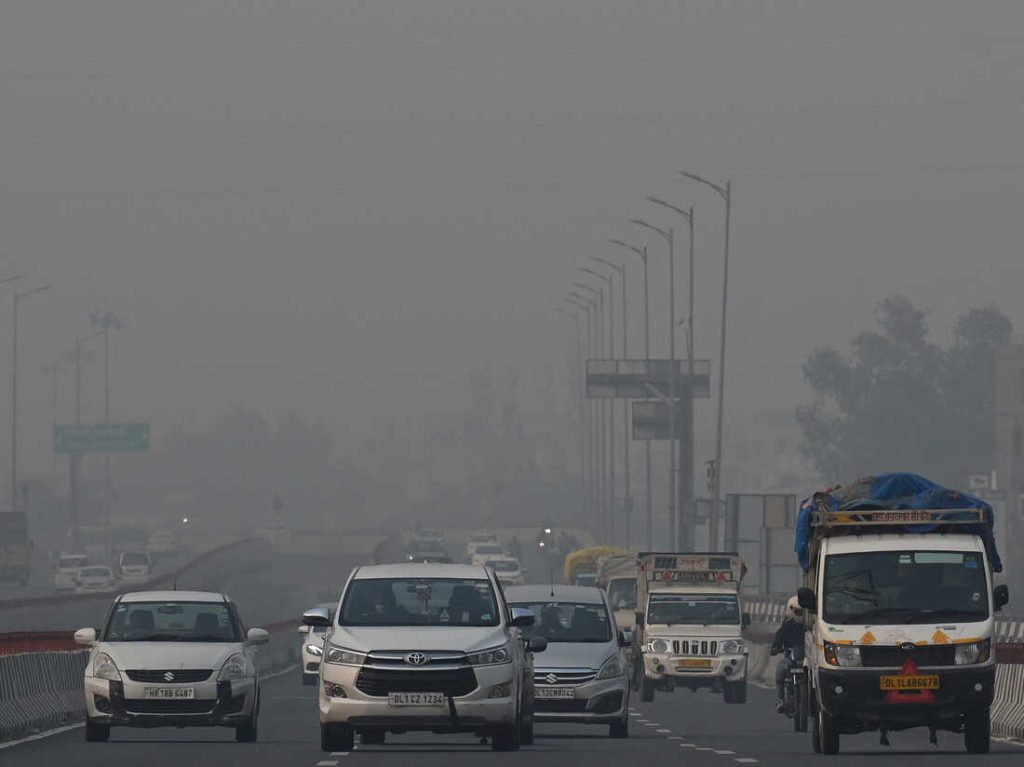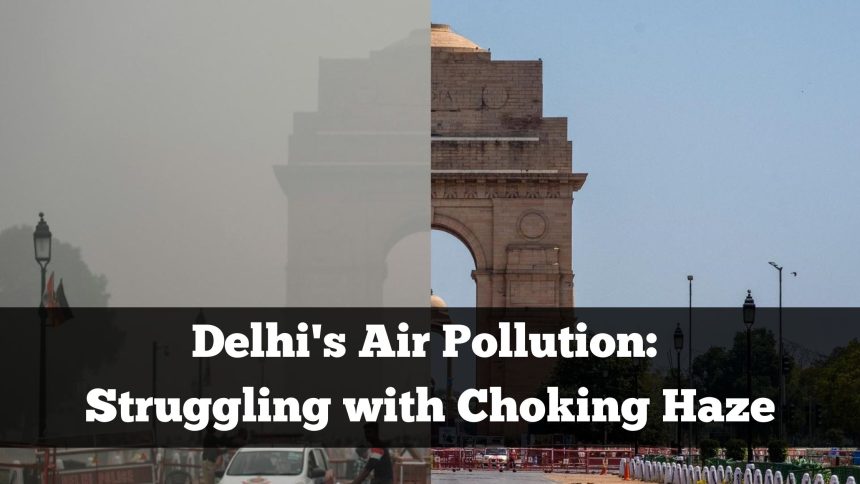Delhi, the vibrant heart of India, once again finds itself in the agony of a persistent problem of severe air pollution that has appeared over the city for years. Delhi’s air pollution has long been a pressing issue, impacting the lives and health of its residents. In this blog, we’ll delve into the most recent developments concerning this pressing environmental crisis. We will also analyze the actions to address the issue and shed light on the challenges that lie ahead.

The Air Quality Index in Delhi
The AQI levels in Delhi continue to be a matter of grave concern. The latest data reveals various areas within the city, including Lodhi Road, Jahangirpuri, RK Puram, and IGI Airport. All have reported AQI levels that far exceed the severe category, ranging from 438 to 491. With pollution levels of this magnitude, daily life in Delhi has become a hazardous journey.
Delhi’s Air Pollution: Key Factors at Play
Multiple elements contribute to the deteriorating air quality in Delhi. While it is easy to single out the Delhi government, Gopal Rai, Delhi’s Environment Minister, is correct in stressing that pollution is not a dilemma confined to Delhi alone. External sources are responsible for twice as much pollution as local sources, highlighting the necessity for a concerted effort among governments across the region.
- Advertisement -
Stubble Burning and Meteorological Conditions
The practice of stubble burning, coupled with unfavorable meteorological conditions, worsens the issue further. Farm fires in North-West India are substantial contributors to Delhi’s poor air quality, and meteorological conditions often trap pollutants within the city.
The Role of Haze Towers
Haze towers were introduced as a potential remedy to improve air pollution. Delhi boasts two such towers, one managed by the central government in Anand Vihar and another in Connaught Place. This is overseen by the Delhi government. Nonetheless, the latter has remained closed for a prolonged eight months. This is despite directives from the Supreme Court and the Cabinet.
Response from the Political Sphere
Various political figures have raised their concerns and recommendations in response to the crisis. Congress leader Jairam Ramesh called for a thorough rebuild of the Air Pollution Act and air quality standards, highlighting the urgency of more severe regulations. Conversely, Delhi Minister and AAP leader Saurabh Bharadwaj declared substantial fines for vehicles utilizing older, more polluting fuels, further accentuating the government’s resolve to address the problem.
Impact on Public Health Due to Delhi’s air pollution
The consequences of Delhi’s air pollution dilemma are severe. Children face the risk of enduring irreversible lung damage, and the city’s residents struggle with a diminished life expectancy of up to 12 years due to prolonged exposure to toxic air. Hospitals are witnessing a surge in patients afflicted with respiratory ailments, prompting residents to don masks and remain indoors.
Delhi is certainly struggling with the ongoing air pollution crisis. The need for collective action and severe measures becomes ever more apparent. While the government has taken some steps, addressing this issue requires a complete approach involving neighboring states, strict regulations, and innovative strategies to confront the sources of pollution. The health and well-being of Delhi’s residents hinge on swift and effective action to combat the hazardous air quality that has been an enduring challenge.


